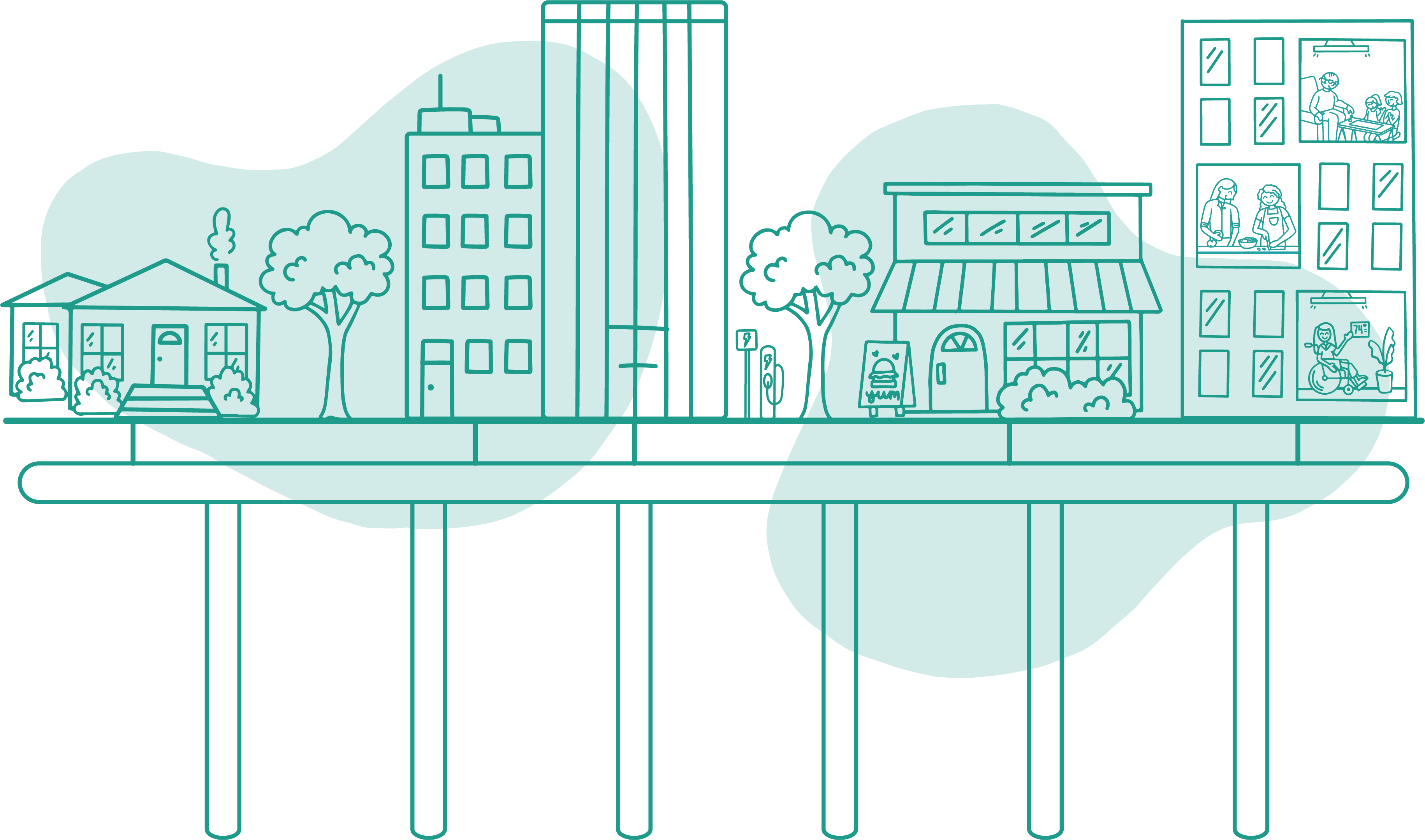Midwest Clean Heat Infrastructure Accelerator
To equitably scale the transition to clean heating sources in the Midwest, we'll need to consider a combination of technologies. Partners including the Midwest Building Decarbonization Coalition and Slipstream are working to support the acceleration of clean heat infrastructure in our communities.
Clean heat infrastructure provides a campus, community, or group of buildings with a combination of non-combustion heating, cooling, and/or domestic hot water. Several advancements in these areas presents an opportunity to decarbonize both new and existing campuses and communities.

A primary approach to clean heat infrastructure is geothermal exchange, which draws the earth's natural heat to and from the ground through distributed heat pumps or a centralized hydronic plant. Driven by the need for large-scale heating and cooling systems that are both clean and cost-effective, several places in the Midwest have already adopted new or retrofit networked geothermal systems.
The following map provides an overview of clean heat infrastructure systems across the Midwest, along with existing district-based central heating plants that hold the potential for future upgrades.
If we missed an in-progress or completed Midwest clean heat infrastructure project, please let us know.
More potential for clean heat conversion
The below table shows the estimated district heating and cooling capacity in Midwestern states which could be converted to clean heat in the future.
| Potential for District Conversion by State | ||
|---|---|---|
| Steam (PPH) | Cooling (Tons) | |
| IL | 7,808,000 | 309,000 |
| MI | 7,082,000 | 118,000 |
| WI | 5,953,000 | 48,000 |
| OH | 5,946,000 | 137,000 |
| MN | 5,898,000 | 72,000 |
| IN | 3,568,000 | 89,000 |
| MO | 2,641,000 | 49,000 |
News and events
"Here's a model for bringing geothermal to urban areas" – Canary Media, Dec. 2022
"The enormous heat pumps warming cities" – BBC Future Planet, Feb. 2023